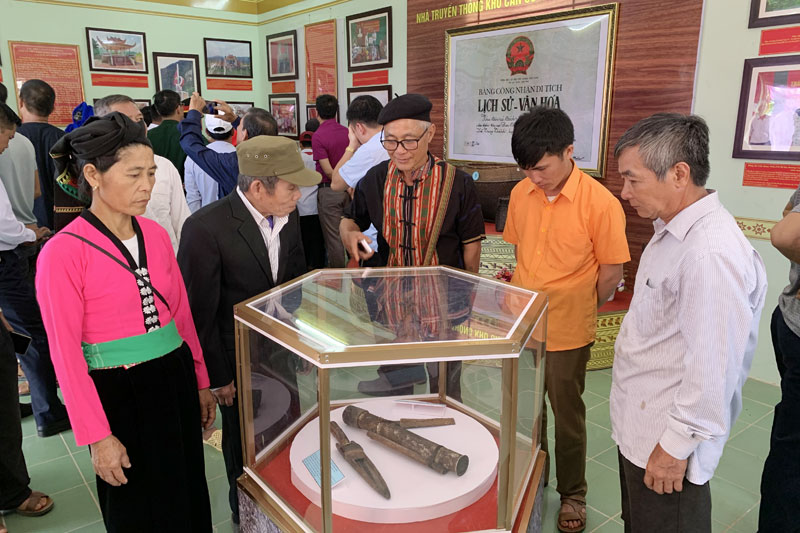
(HBO) - The authorities of Hoa Binh province have paid special attention to preserving and promoting cultural and heritage values of local relic sites.
The provincial museum has maintained a gallery on the typical cultural heritage
of Muong ethnic people in the locality. It also successfully organized exhibitions
on President Ho Chi Minh - the genius leader of the Vietnamese Party and people,
the 90-yearglorious historyof the Communist PartyofVietnam (CPV),
and outstanding achievements of the CPV and the provincial Party organization reflectedthrough Party congresses.
The museum has completed the restoration of two ancient bronze drums and the
dossiers of 41 relics and antiques, while working
on scientific
dossiers of three relic sites – the Song and Hoang Cung Nuoc Ngoc caves
in Da Bac district, and Khoi Communal House in Lac Son district.
Four more relic sites in
the locality were recognized as provincial-level cultural and historical relics,
including Khenh and Bang communal houses in Lac Son district, the RelicA2 Baseof Nhan Dan newspaperin Luong Son district, and Ba Bi Communal House in Kim Boi district.
The province also conducted restoration at Trung Bao Communal House and Temple
in Luong Son district, and Chua Cave in Yen Thuy district./.
With an increasingly vibrant and widespread emulation movement aimed at building cultured residential areas and cultured families, Yen Thuy District has been making steady progress toward improving both the material and spiritual well-being of its people, while fostering a civilized, prosperous, beautiful, and progressive community.
Once lacking recreational spaces and community facilities, Residential Group 2 in Quynh Lam Ward (Hoa Binh City) has recently received attention for the construction of a new, spacious, and fully equipped cultural house. The project followed the model of state support combined with public contributions in both labor and funding.
The "All people unite to build cultural life" movement, which has been effectively integrated with Kim Boi district’s socio-economic development goals, is fostering a lively spirit of emulation across local residential areas, hamlets, villages, public agencies, and enterprises. In addition, through the initiative, traditional cultural values are being preserved and promoted, while community solidarity and mutual support in poverty reduction and economic development are being strengthened.
A working delegation of the Hoa Binh provincial People’s Committee led by its Permanent Vice Chairman Nguyen Van Toan on June 11 inspected the progress of a project to build the Mo Muong Cultural Heritage Conservation Space linked to tourism services in Hop Phong commune, Cao Phong district.
Born and growing in the heroic land of Muong Dong, Dinh Thi Kieu Dung, a resident in Bo town of Kim Boi district, in her childhood was nurtured by the sweet lullabies of her grandmother and mother. These melodies deeply imprinted on her soul, becoming an inseparable part of her love for her ethnic group's culture. For over 20 years, this love for her hometown has driven Dung to research, collect, and pass down the cultural values of the Muong people to future generations.
In the final days of May, the Ethnic Art Troupe of Hoa Binh Province organized performances to serve the people in remote, mountainous, and particularly disadvantaged areas within the province. These were not just ordinary artistic shows, but they were the meaningful journeys aimed at spreading cultural values, enhancing the spiritual life of the people and contributing to the preservation of ethnic minority cultural identities.


